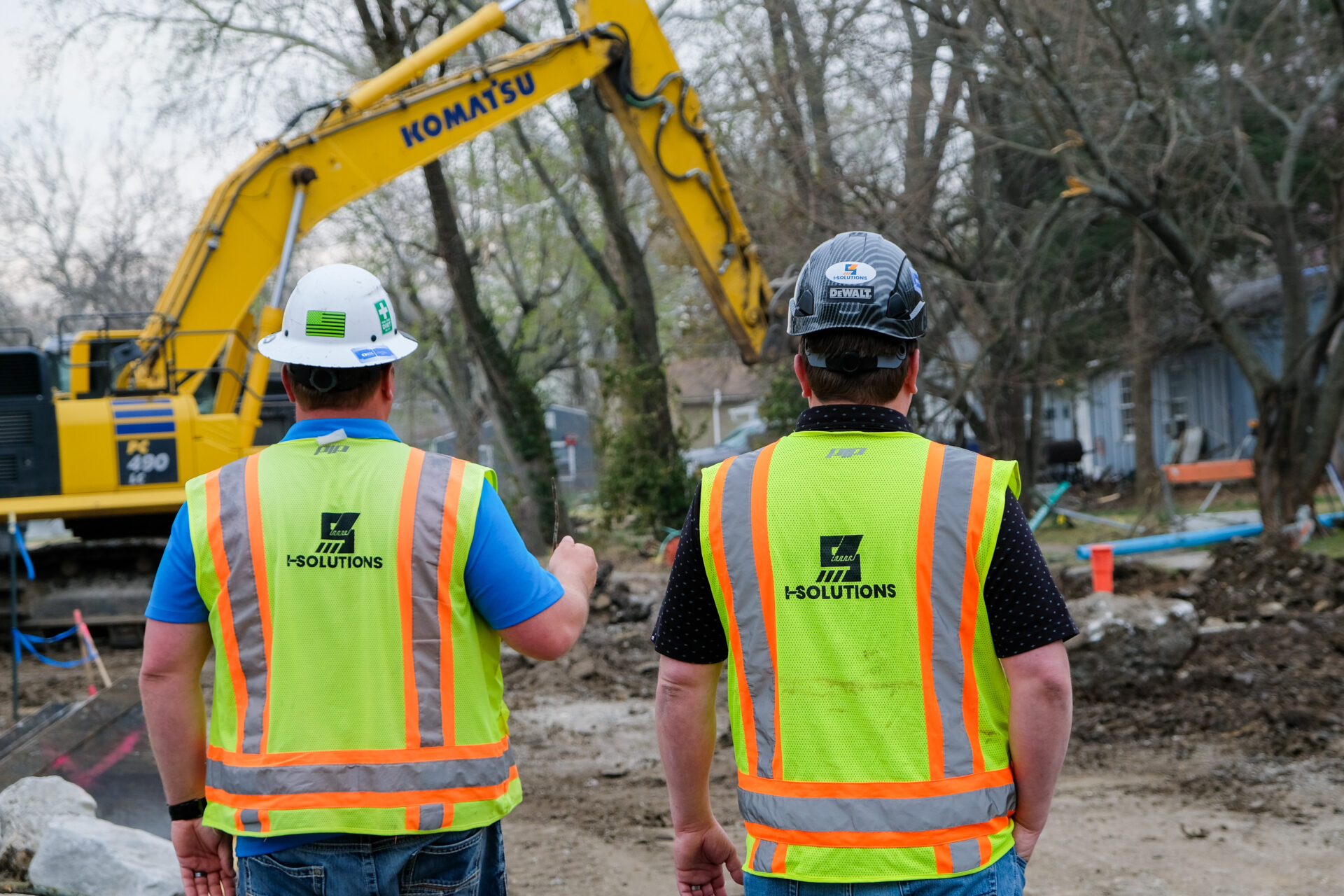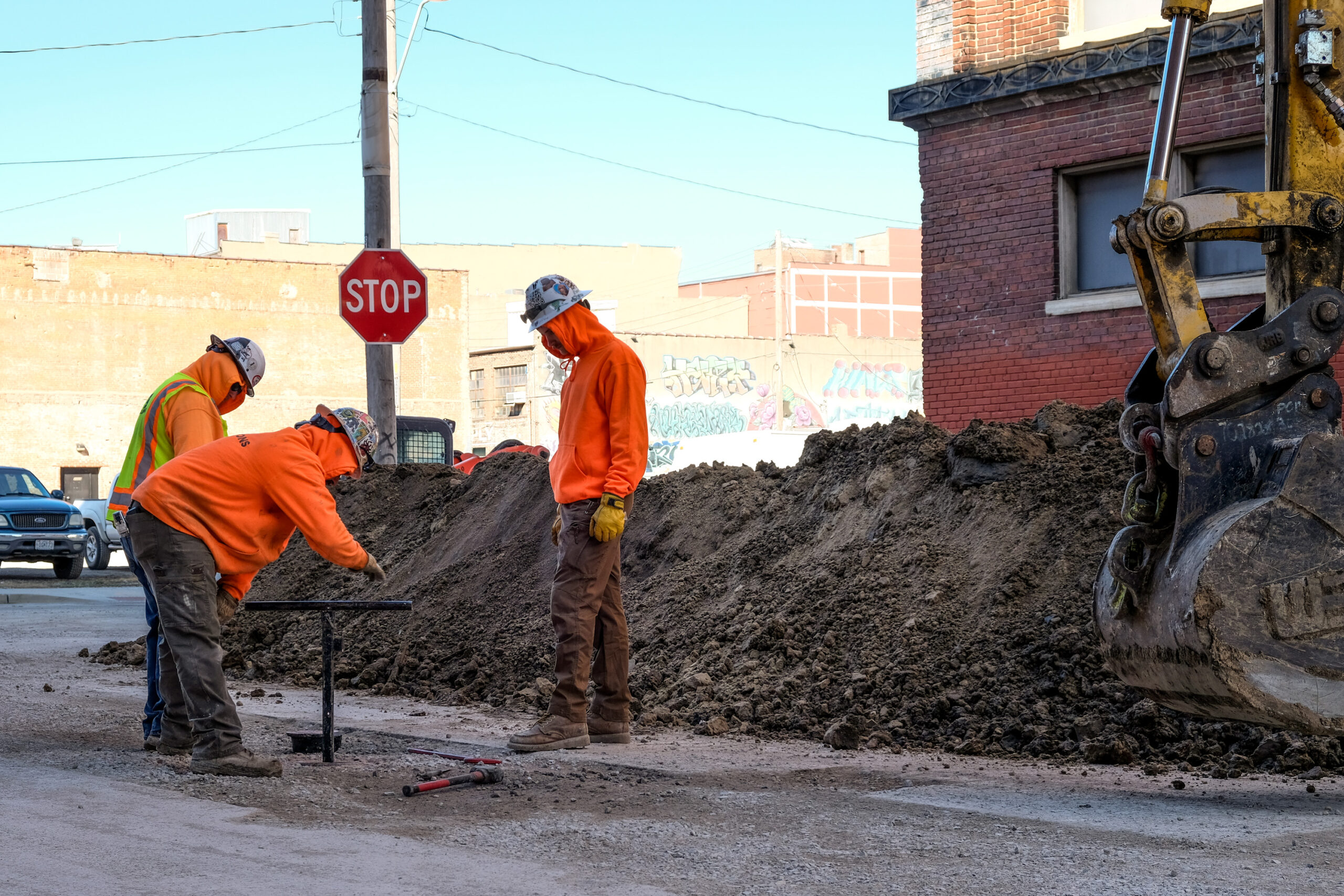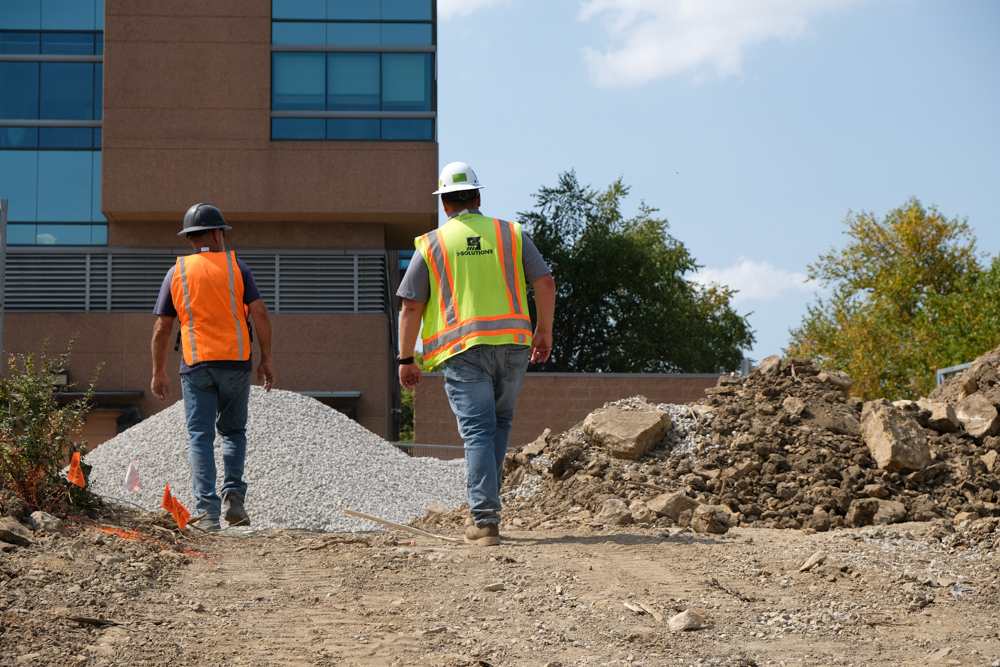
Advancing Construction Jobsite Safety
Jobsite safety in the construction industry is a critical operational priority that extends well beyond the use of personal protective equipment (PPE). While hard hats and safety vests remain essential, they represent only a fraction of the broader framework necessary to maintain safe and efficient work environments. At I-Solutions, our safety philosophy is rooted in practical experience, structured training and shared responsibility—guiding principles that allow us to support our clients and teams with confidence and consistency.
Key elements of effective jobsite safety include the importance of field awareness, behavioral expectations and procedural compliance. By highlighting the practical applications of our safety approach, we aim to reinforce the value of thoughtful, proactive safety management on construction projects of all types and scales.
The Role of Experience and Mentorship in Safety Awareness
Practical experience plays an important role in jobsite safety. While foundational safety principles can be taught in a classroom setting, effective hazard recognition and mitigation often stem from time spent in the field. Understanding the nuances of construction workflows, environmental conditions and team dynamics contributes significantly to informed, real-time decision-making.
Mentorship also serves as a critical resource in developing jobsite awareness. By pairing workers who are new to the industry with seasoned professionals, organizations can encourage knowledge transfer, reinforce expectations and promote consistency across teams. This structured approach helps cultivate a workforce that is both technically proficient and safety-conscious.
Jobsite Etiquette and Behavior Expectations
Jobsite safety is as much about behavior as it is about protocol. Etiquette impacts not only efficiency but also safety outcomes. This includes maintaining situational awareness, communicating clearly, respecting physical boundaries and anticipating the movements of personnel and equipment.
Clear expectations surrounding jobsite behavior should be communicated early and reinforced consistently. When all team members understand and adhere to the same behavioral standards, it minimizes risk and fosters a more unified safety-first culture.
Training and Documentation as the Foundation of Risk Management
Comprehensive safety training is a fundamental component of any successful safety program. While regulatory training such as Occupational Safety and Health Administration (OSHA) 10 and OSHA 30 provide a strong starting point, project-specific training is essential. This includes detailed instructions on standard operating procedures (SOPs), equipment usage and task-specific hazard controls.
Equally important is the documentation of training. Maintaining accurate records of completed training sessions and signed acknowledgments keeps all personnel aligned with expectations. This documentation reinforces accountability and also serves as a critical reference point in the event of a safety incident or regulatory review.

Understanding the Role of PPE Within a Larger Framework
PPE is an essential element of workplace safety, but it is most effective when used as part of a larger, layered safety strategy. PPE is designed to reduce harm when all other control measures have been implemented. Understanding when and how to apply PPE is a necessary component of any jobsite safety protocol.
For example, high-visibility safety vests are often required when personnel are working near roadways with traffic exceeding 25 miles per hour. In these situations, a Class 2 or Class 3 garment—defined by specific requirements for high-visibility and retroreflective materials—is mandated to promote maximum visibility.
Other standard PPE items include hard hats, safety glasses, gloves, steel-toed boots and hearing protection. However, selecting the appropriate PPE requires an evaluation of the specific task, associated risks and environmental conditions. PPE should not be viewed as a substitute for hazard elimination, but rather as a final safeguard.

Air Monitoring and Confined Space Protocols
Confined space entry presents unique risks that must be addressed through rigorous monitoring and procedural adherence. Four-gas air monitoring devices are routinely used to assess the atmosphere in enclosed spaces prior to and during entry. These devices measure oxygen levels, carbon monoxide, hydrogen sulfide and lower explosive limits (LELs).
Before entering a confined space, personnel use these monitors to confirm safe conditions. Should the device indicate a hazardous atmosphere, such as low oxygen or elevated gas levels, entry is deferred until conditions are corrected through ventilation or other appropriate measures. These protocols are essential for protecting personnel and maintaining regulatory compliance in high-risk environments.
Collective Responsibility and Safety Culture
A high-performing safety program is built on a foundation of shared responsibility. At I-Solutions, we view safety as a collective obligation that extends from executive leadership to frontline personnel. While safety professionals may manage training programs and compliance documentation, every team member has a duty to protect themselves and others.
Promoting a culture of peer accountability fosters a safer and more cohesive work environment. This approach also helps normalize proactive safety behavior, allowing hazards to be addressed before they escalate into incidents.
Risk Management Through Proactive Oversight
In addition to on-site practices, safety also involves procedural oversight and organizational discipline. Maintaining comprehensive training records, incident reports and safety audits ensures that risk is managed systematically rather than reactively. These records provide legal and operational protection for all project stakeholders and contribute to ongoing process improvement.
Proactive oversight is not merely a compliance exercise—it is a mechanism for building trust, validating performance and strengthening the resilience of project delivery systems.
Conclusion
Safety on the jobsite is a multifaceted responsibility requiring technical knowledge, situational awareness and organizational commitment. From PPE usage to air monitoring and behavior-based protocols, every aspect of a jobsite must be approached with intentionality and precision.
